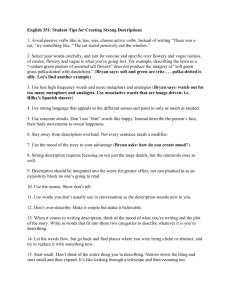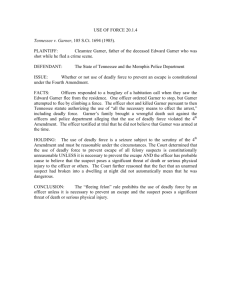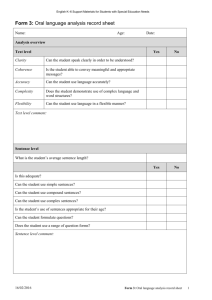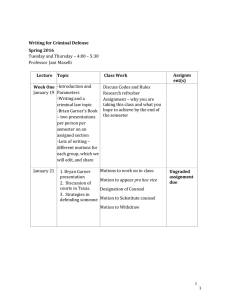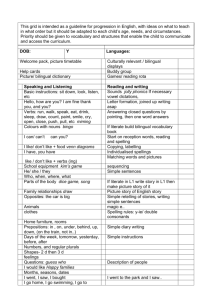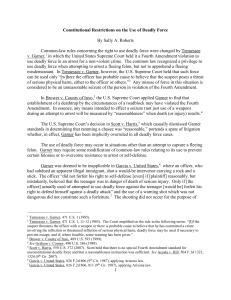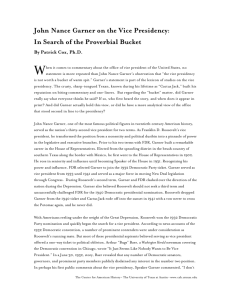the winning brief
advertisement
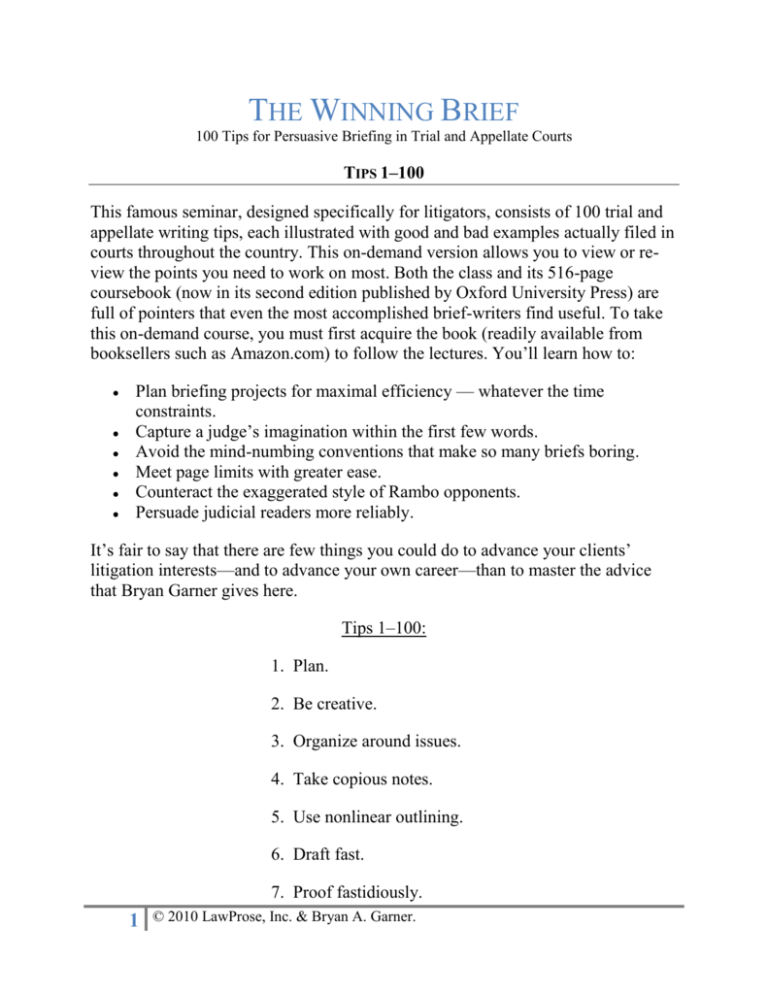
THE WINNING BRIEF 100 Tips for Persuasive Briefing in Trial and Appellate Courts TIPS 1–100 This famous seminar, designed specifically for litigators, consists of 100 trial and appellate writing tips, each illustrated with good and bad examples actually filed in courts throughout the country. This on-demand version allows you to view or review the points you need to work on most. Both the class and its 516-page coursebook (now in its second edition published by Oxford University Press) are full of pointers that even the most accomplished brief-writers find useful. To take this on-demand course, you must first acquire the book (readily available from booksellers such as Amazon.com) to follow the lectures. You’ll learn how to: Plan briefing projects for maximal efficiency — whatever the time constraints. Capture a judge’s imagination within the first few words. Avoid the mind-numbing conventions that make so many briefs boring. Meet page limits with greater ease. Counteract the exaggerated style of Rambo opponents. Persuade judicial readers more reliably. It’s fair to say that there are few things you could do to advance your clients’ litigation interests—and to advance your own career—than to master the advice that Bryan Garner gives here. Tips 1–100: 1. Plan. 2. Be creative. 3. Organize around issues. 4. Take copious notes. 5. Use nonlinear outlining. 6. Draft fast. 7. Proof fastidiously. 1 © 2010 LawProse, Inc. & Bryan A. Garner. 8. Use deep issues. 9. Use separate sentences for issues. 10. Keep issues to 75 words. 11. Write syllogistically. 12. Make issues concrete. 13. Write powerful intros. 14. Highlight reasons for conclusions. 15. Simplify—but never oversimplify. 16. Take care with topic sentences. 17. Transition between paragraphs. 18. Smooth over ―bumps.‖ 19. Provide signposts. 20. Break up long sentences. 21. Beware repetition. 22. Footnote citations. 23. Cite unobtrusively. 24. Talk about the authorities. 25. Avoid parentheticals. 26. Banish legalese. 27. Avoid unnecessary detail. 28. Call people by name. 2 © 2010 LawProse, Inc. & Bryan A. Garner. 29. Avoid is, are, was, and were. 30. Minimize passive voice. 31. Uncover buried verbs. 32. Given the choice, prefer passive voice to buried verbs. 33. Beware prepositions. 34. Avoid subject–verb separation. 35. Avoid verb–object separation. 36. End sentences with punch. 37. Avoid there is & there are. 38. No throat-clearing. 39. Cut, cut, cut. 40. Combine sentences if that’s economical. 41. Use parallelism. 42. Brighten your prose. 43. State ideas freshly. 44. Choose distinctive nouns and verbs. 45. Save syllables. 46. Avoid heavy connectors. 47. No multi-word prepositions. 48. Learn to like sentence-starting Buts. 49. Strike pursuant to. 3 © 2010 LawProse, Inc. & Bryan A. Garner. 50. Get the that–which distinction. 51. Beware remote relatives. 52. Don’t be a that-bigot. 53. Avoid the post-law-school such. 54. Swear off uncommon abbreviations. 55. Generally, dispense with Mr. and Mrs. 56. Don’t be sexist. 57. Learn how to use dashes. 58. Master the phrasal-adjective hyphen. 59. No hyphens after most prefixes. 60. No ―scare‖ quotes. 61. Bullet your lists. 62. The serial comma and the future of the Republic. 63. Master the use of argumentative headings. 64. Format headings properly. 65. Put more space above a heading than below. 66. Set sensible computer defaults. 67. Indent reasonably. 68. Blackball all-caps text and all-caps headings. 69. Spell out one to ten. 70. Use visual aids wisely. 4 © 2010 LawProse, Inc. & Bryan A. Garner. 71. Understate. 72. If you’re against an overstater, deflate. 73. Don’t repeat the title in your opener. 74. Describe litigants doing things, not filing documents. 75. Quote sparingly. 76. Assert the point before quoting in support. 77. Paraphrase to clarify. 78. Abbreviate case names correctly. 79. Shun clearly. 80. Write knock-out statements of fact. 81. Expel unnecessary dates. 82. List important dates. 83. Educate yourself about English usage. 84. Show, don’t tell. 85. Divide; don’t multiply. 86. Write responsive briefs early. 87. Say it well and emphatically—not repetitively. 88. Refute the counterarguments. 89. Close powerfully. 90. Attach the important cases. 91. Visualize your reader. 5 © 2010 LawProse, Inc. & Bryan A. Garner. 92. Guard against miscues. 93. Make it speakable. 94. Cut page limits in half. 95. Discuss the standard of decision. 96. Say exactly what you want. 97. Show the equities as well as the law. 98. Don’t waste the court’s time. 99. Evaluate draft briefs with focus groups. 100. Remember ethos. 6 © 2010 LawProse, Inc. & Bryan A. Garner.



